Key takeaways:
- Active listening and clarity in communication strengthen interactions and build trust.
- Personal connections through remembering details and vulnerability foster deeper relationships.
- Follow-up communication and being a resource for others enhance networking opportunities.
- Adapting to different communication styles can improve the effectiveness of networking conversations.
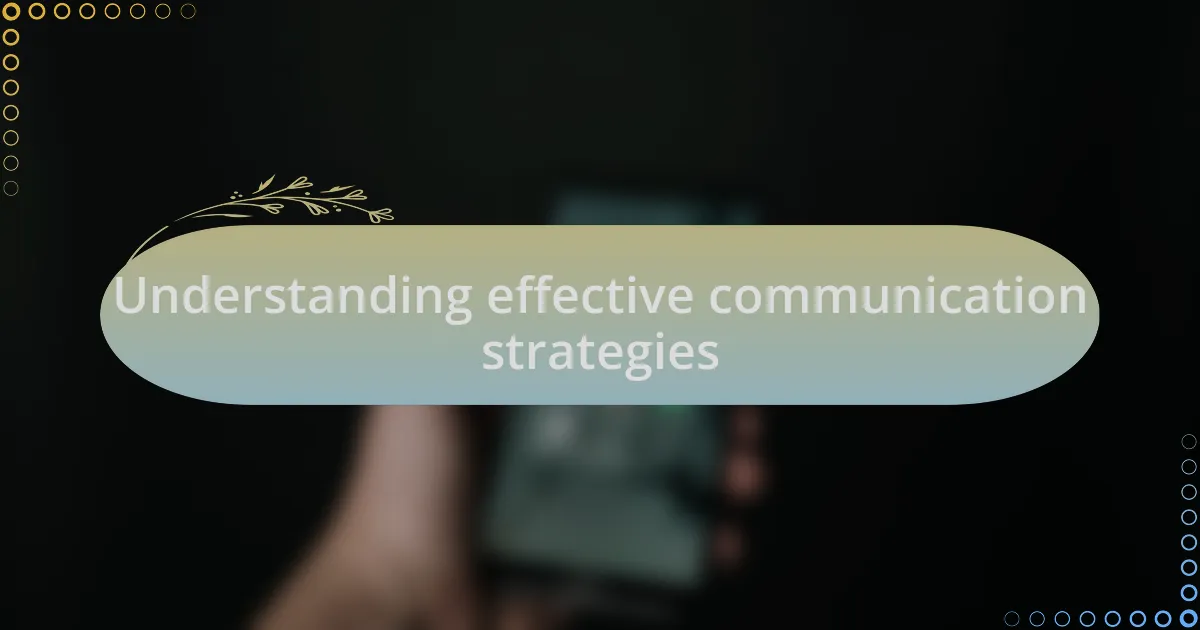
Understanding effective communication strategies
Effective communication strategies are foundational to successful interactions, especially in networking environments. I’ve found that listening actively can transform a conversation. Have you ever noticed how people respond when they feel genuinely heard? It’s as though the atmosphere shifts, making the exchange more meaningful.
Another key aspect is clarity. I recall my early days in networking, when I often overcomplicated my messages. Learning to express myself succinctly not only made my points clearer but also boosted my confidence. It’s fascinating how simplifying your message can draw people in like a magnet.
Finally, non-verbal cues can significantly enhance your communication. I remember attending a local business event where one speaker’s enthusiasm was palpable—it radiated through their body language. How often do we underestimate the power of a smile or eye contact? These subtle signals convey authenticity and can forge stronger connections than words alone.
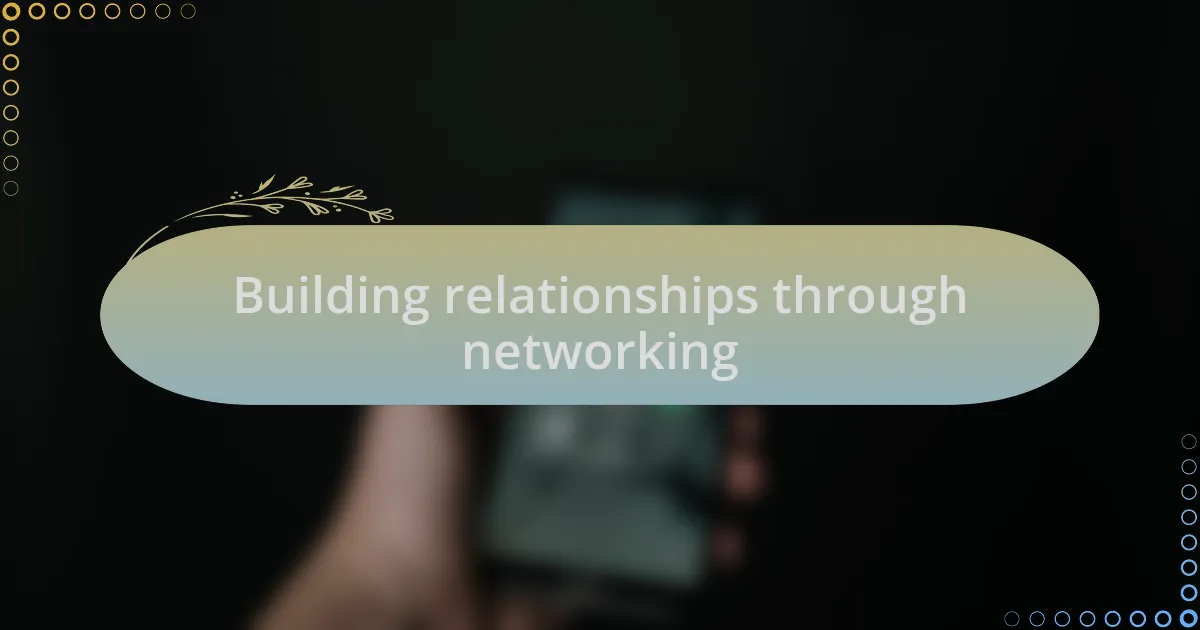
Building relationships through networking
Building relationships through networking requires a genuine investment in each connection. I recall attending a small networking mixer where I made it a point to remember a few personal details about the people I met. This simple act of remembering birthdays or favorite hobbies allowed me to follow up later with a personalized message, and those small gestures made a profound difference in how those relationships blossomed over time. Isn’t it interesting how a little attention can lead to lasting bonds?
As I navigated the world of networking, I learned that vulnerability can enhance relationships. One evening, I shared my challenges in scaling my own business, and to my surprise, others responded by opening up about their obstacles. This exchange created a bond of trust and understanding, fostering a supportive atmosphere. What if more conversations embraced authenticity? It could revolutionize our networking experiences, don’t you think?
Moreover, prioritizing consistency in interactions is crucial for building relationships. I’ve seen firsthand how regular check-ins can keep connections warm. After attending workshops or conferences, I make it a habit to reach out to fellow attendees. A simple “Let’s catch up” can reignite connections and deepen those relationships. Have you ever noticed how a little effort goes a long way? Just like watering a plant, those consistent touches nurture connections that can flourish over time.
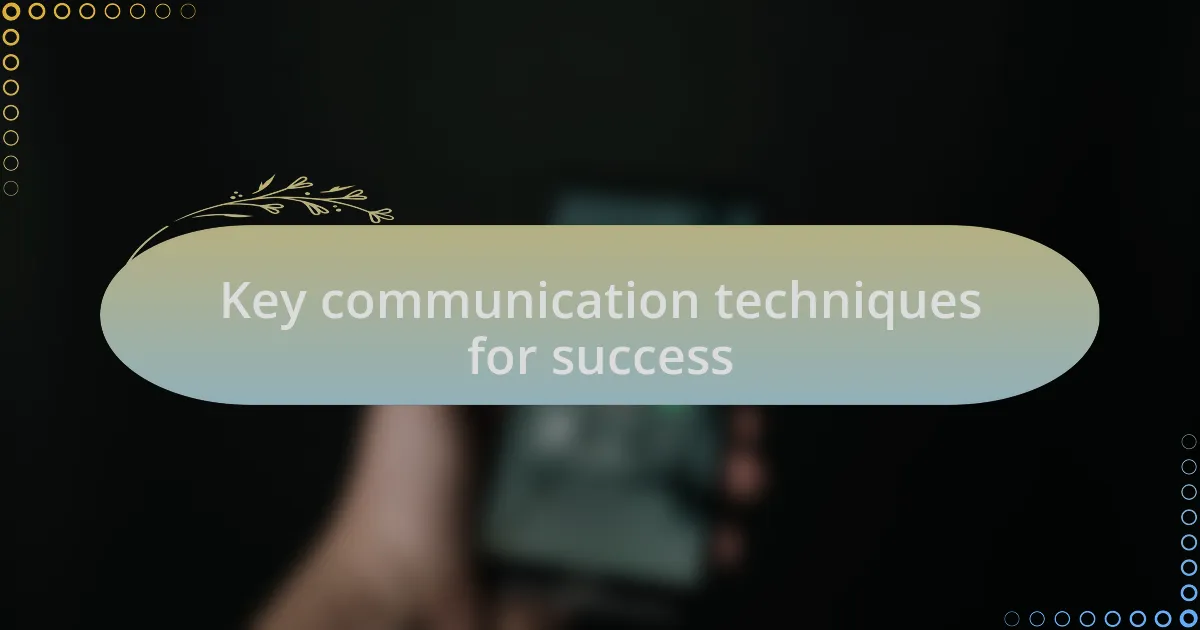
Key communication techniques for success
Effective communication is key to forming strong connections. One technique I’ve found invaluable is active listening. During a recent networking event, I focused entirely on what the other person was saying, rather than preparing my response in my head. This not only showcased my interest but also allowed me to ask thoughtful questions, creating a deeper dialogue. Have you ever noticed how people respond positively when they feel truly heard?
Another crucial technique is clarity in messaging. I’ve learned that being direct and concise prevents misunderstandings. For instance, when discussing potential collaborations, I make it a point to outline my goals clearly. It eliminates any ambiguity and sets a solid foundation for partnership discussions. Isn’t it amazing how a few well-chosen words can steer conversations toward success?
Finally, using body language strategically enhances how we communicate. I remember a networking lunch where I consciously maintained eye contact and smiled genuinely while engaging with others. This non-verbal communication conveyed openness and enthusiasm, making the interaction more inviting. How often do we underestimate the power of our physical presence? Engaging both verbally and non-verbally can transform standard conversations into memorable experiences.
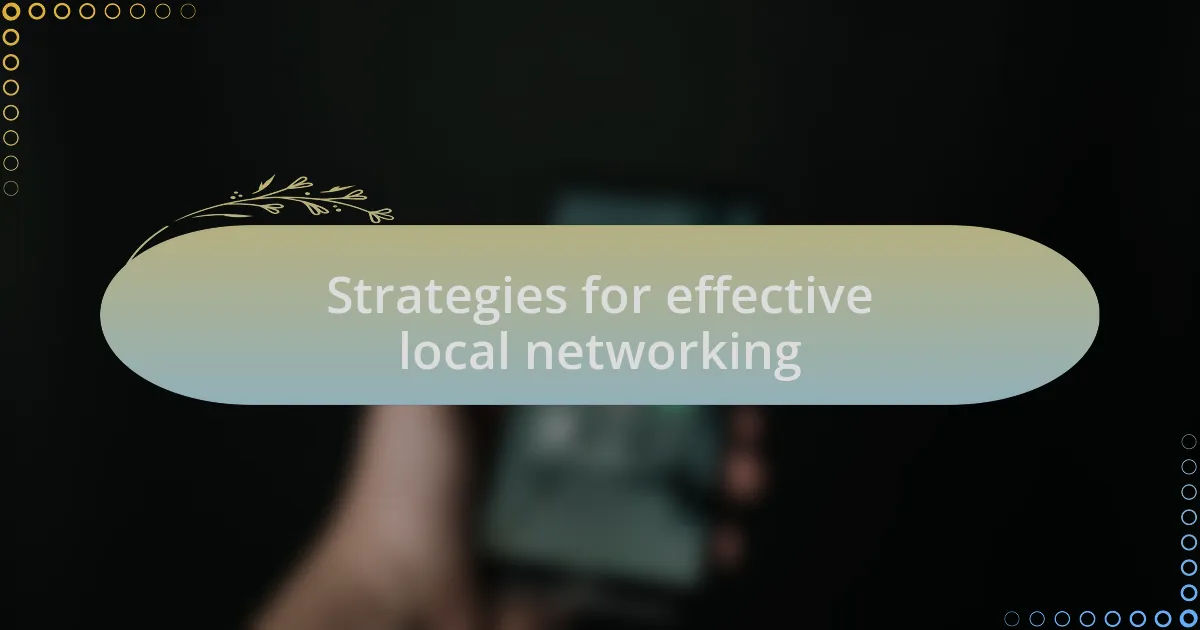
Strategies for effective local networking
One effective strategy I’ve discovered is to leverage local events to connect with others in your community. At a recent farmers’ market, I set up a small booth for my business and took the time to mingle with vendors and customers alike. What struck me was how genuine conversations unfolded when we showcased our passions. Have you ever experienced that moment when a simple interaction turns into a meaningful connection?
Another strategy involves follow-up communication after initial meetings. I remember leaving a networking mixer with several business cards and a plethora of interactions, but what made the difference was my quick follow-up emails the next day. I referenced our conversations and suggested collaborations, which sparked interest and built rapport. It’s incredible how taking that extra step not only reinforces your initial connection but also shows you value their time and insights. Isn’t it worth the effort to cultivate relationships that matter?
Lastly, being a resource for others in your network can be incredibly rewarding. I recall a time when a fellow entrepreneur reached out for advice on a project I had experience with. By offering my insights freely, I not only helped her out, but I also solidified our relationship for future collaborations. Isn’t that what local networking is all about—creating a community where we all lift each other up? By positioning yourself as a helpful ally, you naturally foster trust and mutual respect within your network.

My personal experiences with networking
Networking has often felt like a dance for me, at times awkward yet exhilarating. I vividly recall walking into a local business event, the energy buzzing around me. Initially, I felt a bit hesitant, but after a few conversations, I realized the warmth of shared experiences. Have you ever found that common ground with a stranger and thought, “This is the start of something great”?
During one memorable encounter, I bumped into a fellow business owner who shared my passion for community engagement. That day, we exchanged not just ideas, but a vision for collaborating on a local charity event. I still remember the rush of excitement as we brainstormed together, igniting our imaginations. Isn’t it fascinating how one conversation can transform into a tangible plan that benefits others?
I’ve also learned that listening is just as crucial in networking as speaking. At a recent workshop, I made a point to focus on others’ stories rather than my own. By giving them space to share, I built deeper connections that led to unexpected collaborations. Reflecting on that, I can’t help but ask: how often do we overlook the power of simply listening in our networking endeavors?
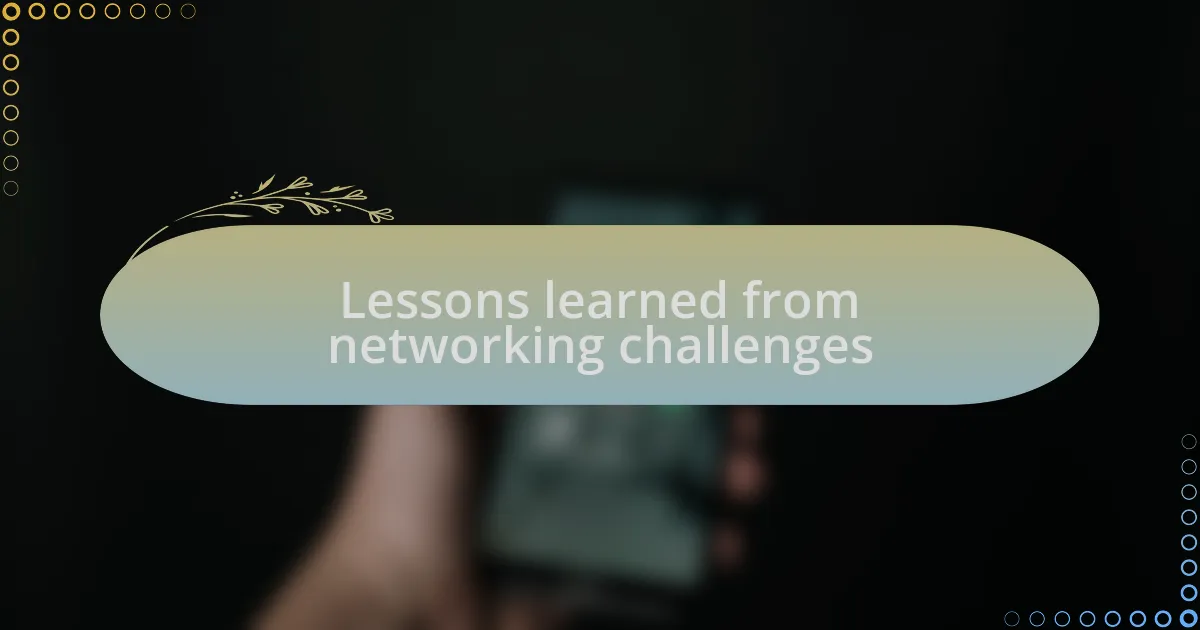
Lessons learned from networking challenges
When I think back to my early networking attempts, a lesson stands out: the importance of embracing vulnerability. At one event, I shared my struggles with a project that was not going as planned. To my surprise, several attendees opened up about their own bumps in the road. It struck me how vulnerability can lead to authentic connections, transforming a typical exchange into a supportive network. Has something similar ever happened to you?
Another challenge I faced was the art of following up. I remember leaving a conference with a pile of business cards, only to realize weeks later that I hadn’t reached out to those connections. The missed opportunities weighed on me. It taught me that a timely follow-up isn’t just polite; it’s essential for maintaining the momentum of connections. How often do we let good conversations fall flat in the absence of follow-through?
Adapting to different communication styles has also been a key lesson. I once met someone who was assertive and direct, while I tend to approach conversations with a softer touch. Initially, I felt overwhelmed, but then I realized that understanding these differences in style can be a powerful tool. It encourages flexibility and allows for more enriching dialogues. Have you ever modified your approach to connect better with someone?